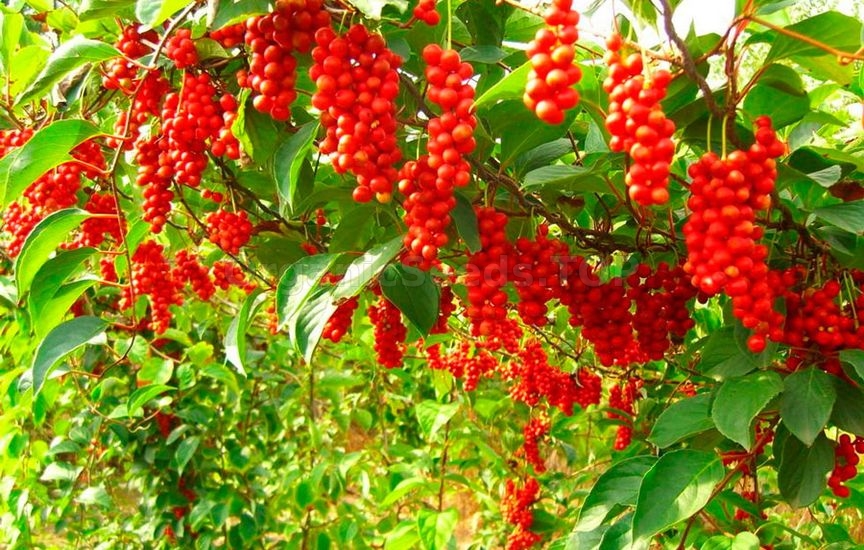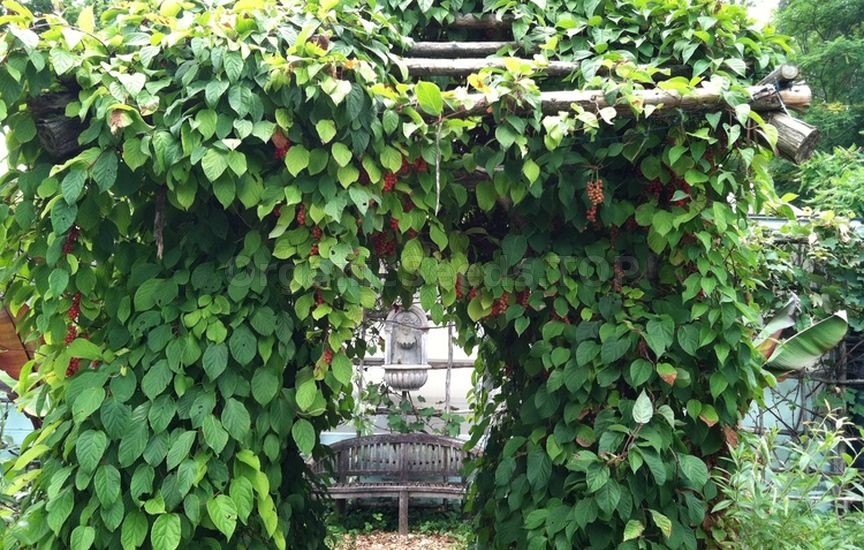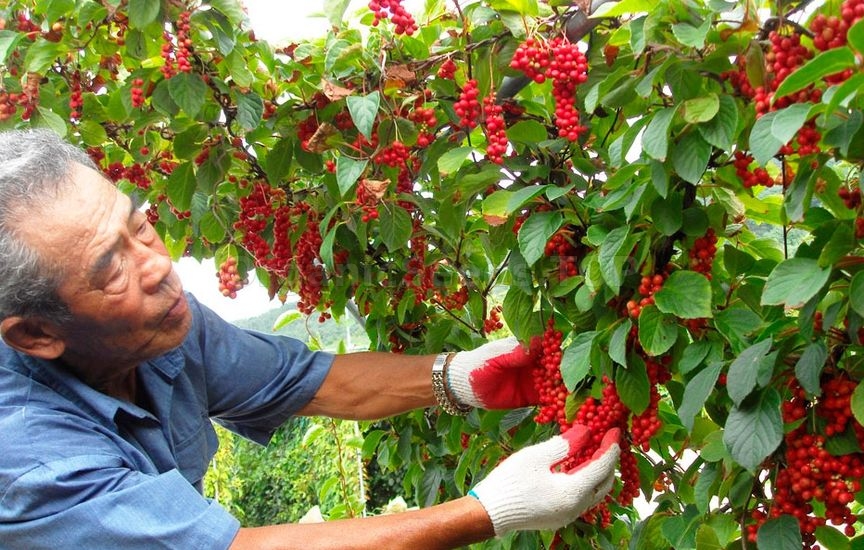Schisandra chinensis - growing tips |
Growing and caring for Schisandra chinensis is carried out not only for medicinal purposes, but also for decorating the site, since the plant has high decorative qualities. In areas with a warm, mild climate, lemongrass is planted in October, and in the middle zone, planting is carried out at the end of April or beginning of May. Professionals recommend planting at least three plants at a distance of 1 m from each other. If you want to grow a vine near the house, step back 1-1.5 m from the wall so that water from the roof does not drip onto the lemongrass.
 Schisandra prefers light, but humus-rich, moist and well-drained soil. The plant is shade-tolerant, but will develop better in a well-lit place. Two- to three-year-old seedlings are used as planting material, which, with a shoot height of only 10-15 cm, have a well-developed root system. Before planting, taller shoots of the seedling are shortened to 3 buds, and the roots are trimmed to 20-25 cm. A planting hole for Schisandra chinensis is dug with a diameter of 60-70 cm and a depth of at least 40 cm. A drainage layer of expanded clay, broken brick or crushed stone 10 cm thick is laid on the bottom, and to fill the hole a soil mixture is prepared from equal parts of humus, leaf compost and turf earth, adding 200 g of superphosphate, half a kilogram of wood ash and mixing thoroughly. Before planting, pour the soil mixture onto the drainage layer. Dip the roots of the seedling into a clay mash, add 1 liter of mullein to a bucket, and place the plant on a mound so that its root collar is at surface level after planting. Spread the lemongrass roots and fill the hole with prepared fertile soil. Then compact the soil in the tree trunk circle and water it generously, and when the water is absorbed, fill the root hole with humus or peat. Chinese lemongrass seedlings take root very quickly, but it is advisable to initially protect them from bright sun, provide regular watering and evening spraying in dry weather. Caring for Schisandra chinensisPlanting Schisandra chinensis and caring for it is not labor-intensive and will not take up much of your time. The main care measures are watering, loosening the soil, removing weeds, fertilizing, spraying in prolonged dry heat and pruning.  During the growing season, lemongrass is watered frequently and abundantly: 6-7 buckets of water are poured under the plant at a time. The next day after moisture or rain, you need to loosen the soil around the vine and remove weeds. Do not neglect evening spraying of Chinese lemongrass in the heat. Young vines especially need this procedure. To prevent the rapid evaporation of moisture from the soil, it is better to always keep the tree trunk under mulch made of organic material. They begin to feed Chinese lemongrass from the third year of life: during spring and summer, a solution of organic fertilizers - cow (1:10) or chicken (1:20) manure - is added to the soil once every two to three weeks. A good result is obtained by mulching the trunk circle of Schisandra chinensis with humus or leaf compost. After leaf fall, 100 g of wood ash and 20 g of superphosphate are added under each bush, followed by embedding to a depth of about 10 cm with mandatory subsequent watering of the soil in the tree trunk circle. During the flowering period, fruit-bearing vines are fed with Nitrophoska at the rate of 50 g per m², and after flowering, a bucket of a solution of fermented mullein or bird droppings is poured under the plant. In autumn, 60 g of superphosphate and 30-40 g of potassium sulfate are scattered under the bushes, and once every 2-3 years, compost is poured under each plant to a depth of 6-8 cm at the rate of 4-5 kg per m². Schisandra chinensis, since it is a vine, is grown on a trellis, which is installed in the year the plant is planted. This arrangement of branches and shoots allows the sun's rays to better illuminate the plant, and this contributes to the formation of larger fruits and an increase in yield. If you grow lemongrass without support, it is unlikely to bear fruit. The trellis is made from pillars of such a height that after digging to a depth of 60 cm they rise above the ground by 2-2.5 m. The distance between the pillars is maintained at about 3 m, and they are connected to each other by three rows of horizontal wire guides, the lower of which is stretched by height of 50 cm from the ground, and the next ones every 70-100 cm. In the first year, the regrown shoots are tied to the lower guide, and in subsequent years - to those located above. The shoots are secured to the support with a fan. For the winter, Chinese lemongrass is not removed from the trellis.  If you plant a vine near the house, then you can use a ladder installed at an angle as a support. They begin to prune lemongrass in the third year after planting, when the development of its root system gives way to increased shoot growth. Not only the decorative appearance of Schisandra chinensis, but also the quality of its fruiting depends on proper pruning. During the first formative pruning, 3 to 6 of the strongest and correctly positioned shoots are left on the bush - the future skeleton of the plant, and the remaining shoots are cut out at ground level. In the future, pruning of Schisandra chinensis is carried out twice a year: in autumn and summer. In the fall, after all the leaves have fallen from the plant, cut out weak, diseased, improperly growing and dried shoots that formed over the summer. The part of the vine that has been actively bearing fruit for the last three years should also be removed. This is done so that young shoots of the vine can develop and produce a harvest. In summer, lemongrass is pruned only if the plant has formed too many young shoots. Professionals advise cutting branches 10-12 buds from the edge. In addition, it is necessary to combat root shoots annually, as well as regularly replace old skeletal branches with new strong shoots from the basal shoots. You may need:Chinese Magnolia Vine Seeds (Schisandra Chinensis) |
|
|
